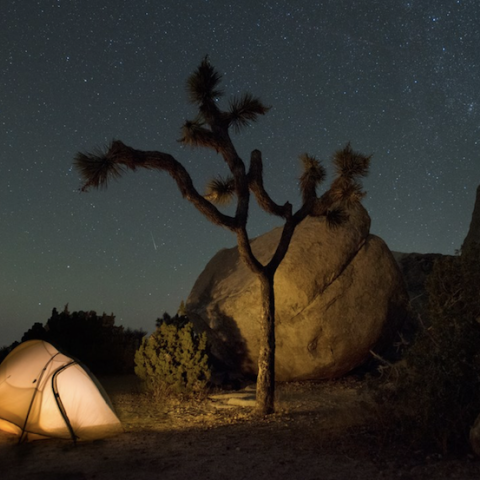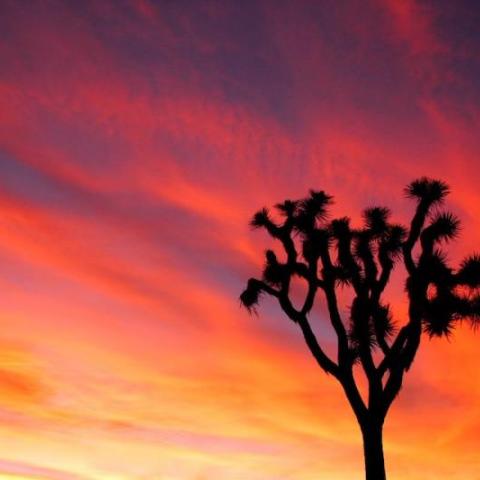Editor's note: As part of National Parks Traveler's Centennial Series, Jacob Choi, a student at the State University of New York College of Environmental Science and Forestry, examines the problem of relevancy with the National Park System and suggests ways to make the parks relevant for younger generations.
Consider this future scenario: the desire to see the wonders of the American outdoors is considered uninteresting, unfruitful to thought, and an unproductive experience that doesn’t help with life. These thoughts are coming from the parents of the future who pass on their knowledge to their children.
This apocalyptic scenario is extreme and highly unlikely, but there seems to be a degree of reality in there. While I speak for my generation, I do not speak for everyone. My observations do not support everyone’s thoughts and actions in my generation, but serve as windows to trends that my friends are experiencing. But, how do we get there? And most importantly, how do we prevent the above scenario from happening? While it’s obvious that park visitors come from a variety of backgrounds there is an observable trend that visitors tend to be in retiring age or from overseas.
The fact that many from the retiring “baby boomer” generation are visiting the parks doesn’t surprise me. In fact during the economic boom of post WWII, there was an explosion of Americans “road-tripping” out west to our national parks. A whole generation grew up with parks as a piece of their childhood. These places became areas where children experienced happy times with their families by experiencing the parks as they do today by hiking, fishing, camping, etc. The parks had such a great impact on the 1950s society that cartoons like Yogi Bear centered on the national parks. Park visitation itself was such a profound issue that the National Park Service (NPS) realized that sites don’t have the facilities to handle the visitation levels issued the Mission 66 campaign to create bigger visitor facilities to handle many visitors. Now at retirement age, many “baby boomers” return back to the landscape that reminded them much about childhood.
It’s obvious that the 1950’s-1960’s are very much different than today with regards to tourism. The revelation that today’s youth are traveling overseas in greater numbers regards to two facts that differ from the “baby boomers” world: 1) cheaper airfare tickets and 2) global politics have changed.

Cactus Forest, Saguaro National Park/Jacob Choi
The first fact stems the increased airline demand and competition. Today, airline travel is much more common and accessible than it was sixty years ago. Airlines now are creating more nonstop flights to further overseas destinations, and the globalizing world which demands connections to the cities that companies conduct business with fuel this trend. Many of today’s youth seem to take advantage of this to take vacations to Europe, Latin America, and even the Middle East.
The second fact is deduced by the end of the Cold War. While there are places on Earth that have current instability, along with places in which Americans aren’t welcome to visit, there is a big gap in places that Americans can freely travel to back during the height of the Cold War (1950’s-1960’s) to now. As an example, I offer the People’s Republic of China (PRC). Back before Nixon “opened China’s doors” it was quite inconceivable to pay a visit to Beijing or Shanghai. A flight to Hong Kong or Taiwan would’ve been horrendously expensive and would’ve involved a multitude of stopovers. Today, it’s quite easy to visit any of those countries on a nonstop flight from the U.S. (granted you have a Chinese visa).
Of course, these two points lead to the fact that many of the visitors to our national parks come from overseas. Their freedom to travel has led them to experience a landscape that many millennials might not experience.
To further fuel the flames of irrelevancy, there seems to be a shift (this is my observation) towards carriers that center on the Science Technology Engineering and Mathematics (STEM) disciplines. And, as “green energy/ technology” is one of those jobs that help the planet and the parks, many other jobs that fall under that category may not acknowledge or consider the ecology, biological, or geological significance of the places that fall under protection by the NPS. As a result, many of today’s youth may focus more on science that caters more on technology which may render the NPS as insignificant and has the ability to stem a disinterest in nature in general.

This then leads to the topic of stewardship, for me this section is the hardest to write about. As the topics that lead to irrelevancy develop, it might be hard to find the next generation of stewards, volunteers, and park rangers. A future scenario might lead to parents who emphasize a microbiological world instead of an ecological one, every family trip would be overseas, and a mindset that views the national parks irrelevant enough to be defunded. Children would only recognize Florida as the site for Walt Disney World, California for Hollywood, and Hawaii for beaches. For many that travel from the east coast to Asia, the state of Alaska would be labeled as “Fly-over country,” synonymous with a place that isn’t worth visiting. This leads further into a lack of awareness for the ecological world, a world that the Earth should never face.
While it is important to travel overseas in order to gain experience in another culture. It is just as important to travel within our country as well. I too remember traveling overseas, when I went to Paris I had a better understanding of the French Revolution than a high school history book can explain. I also recall when I visited the Badlands, in which I learned more about the unique geology of South Dakota in ways I had never imagined.
The best result this case is to encourage moderation. Have students (especially high school students) be exposed to scientific careers that promote areas of the U.S. that travelers all over the world see. A great way to do this is to incorporate examples into the curriculum that some national parks are known for. With regards to geology, an example would be the Grand Canyon. An ecology class can learn about environmentalism when studying the Everglades, and a chemistry class can have an example that has a toxic explosion that’s found in Yellowstone and Hawaii Volcanoes. I can also make the statement that by using examples in the history of the national parks reinforces topics learned in history class. Mather’s extravagant ideas are a testament to the affluence and superficiality of the roaring twenties, the conservationism of Theodore Roosevelt is also worth mentioning, and John Muir representing the era of Progressivism (I’m inclusive to national parks here, there are many places the NPS preserves that are where American history occurred).
Of course, as the U.S. attracts immigrants from all over the world, the next generation of stewards will be from a variety of backgrounds and will be incredibly diverse. A way to make the NPS be a beneficiary of this is to make employment attractive. To do this, scholarships for graduate school or increasing the staff size for the parks may be necessary. Employees would be exposed to a variety of people, exchange ideas and learn from each other, promoting a global stewardship that we need for the future. Whether one lives in an urban area, or a rural area, whether someone is black or white, Christian or Muslim, Democrat or Republican, national park stewards will be in every group mentioned, and even more.
To increase visitation for millennials, consider the idea for a youth pass just like how the Euro rail youth prices hook the college student. I also believe that the NPS has to partner up with companies as it did in the past. The American Automobile Association (AAA) and the National Geographic Society have roots and connections with the NPS. It was AAA who promoted the See America First campaign, and helped Mather with the Park to Park highway. I believe we need this highway back in order to have the national parks become an adventure that is better than Europe or China.
And finally, the best thing that the NPS can do is to cherish its traditions. Nothing beats the romance of a ranger talking over a geographically diverse group in the darkness of night telling the stories that make the national parks. The NPS should not compromise its integrity. Rangering was and still is a duty that saves our planet every day. We need more rangers than any other bureaucratic job, we need to set the standards and lead the world in stewards because it’s required by owning the title: Country with the World’s First National Park.

Devils Tower National Monument/Jacob Choi






 Support Essential Coverage of Essential Places
Support Essential Coverage of Essential Places







Add comment